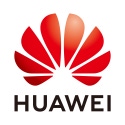Solution uses the innovative optical path technology to achieve visualized management of ODN resources and build a highly automated and intelligent all-optical network infrastructure.
March 24, 2022

Recently, China Mobile Sichuan and Huawei jointly launched the Digital Quick ODN(DQ ODN)solution with the fiber iris technology, with the solution turning out to be a huge success in Sichuan. The solution uses the innovative optical path technology to achieve visualized management of ODN resources and build a highly automated and intelligent all-optical network infrastructure.
According to Analysys Mason's latest market share research report on the ODN(Optical Distribution Network), Pre-connectorisation and digitalisation represent increasingly important trends for the optical distribution networks of the future. To achieve digital and intelligent network transformation, traditional ODNs must be upgraded. To meet this requirement , China Mobile Sichuan cooperated with Huawei to develop the DQ ODN solution with a unique fiber iris technology to upgrade the ODN on the existing network.
This solution features a high-precision optical path information collection module (OAI), an intelligent algorithm analysis module, and a digital fiber iris module to make the ODN visible, manageable, and maintainable. In addition, the solution enables optical path testing and remote ranging, online check of ODN resources, and fast fault demarcation and locating, facilitating digital and intelligent network operation.
Figure 1:  DQ ODN Solution Presentation at MWC 2022
DQ ODN Solution Presentation at MWC 2022
Precise management of network-wide resource data
After traditional ODN construction completed, resource data is usually transmitted by manual drawings and requires multiple on-site checks. Which, however, leads to inaccurate resource recording and heavy workload. Worse yet, services are interrupted during port check, delivering poor user experience.
Underpinned by the high-precision optical path data collection capability and intelligent algorithm, the DQ ODN solution displays the E2E topology of optical paths, automatically checks ODN resources in batches, and monitors the port status of optical paths, enabling visualized management of optical path resources. The resource data can also be used as key parameters for network planning and construction to realize precise planning of optical paths.
Visualized optical path topology, locating faults in seconds
Traditional passive ODNs cover large areas, making fault demarcation and locating difficult. Making matter worse, 25% to 40% of optical path faults are manually located. As a result, alarm analysis is often inaccurate takes a long time and is often inaccurate, resulting in low troubleshooting efficiency.
By leveraging the high-precision optical path data collection capability and fiber iris mapping technology, the DQ ODN solution identifies the feeder, distribution, and drop fibers, as well as visualizes the optical path fault topology to accurately demarcate and locate faults. In addition, the DQ ODN is always online. This ensures it can monitor the changes of optical path insertion loss and thereby demarcate weak optical signals in advance. Faults can be located within seconds and rectified within minutes, which are vital for remote mountainous areas and unexpected geological disasters. The DQ ODN solution has demonstrated it can improve the fault recovery efficiency by 50% and save an average of 2,475 hours in O&M for each CO per year.
Remote acceptance of all links, ensuring high network quality
On a traditional ODN, the construction unit needs to measure the optical link quality and generate a report. During the acceptance, the operator still needs to visit sites and perform tests segment by segment. The entire acceptance process requires multiple site visits, which are laborious and time-consuming, and the acceptance quality cannot be ensured.
In the DQ ODN solution, devices are deployed at the CO side to perform full-link optical attenuation tests, eliminating the need for site visits and segment-by-segment acceptance tests. Better yet, the solution supports one-off remote, full-link, and full-coverage acceptance of home broadband optical links and outputs key parameters such as optical path quality, quantity, and length. With this solution, more homes are able to benefit from premium networks with faster speeds.
Currently, the DQ ODN has been used to upgrade many sites in Chengdu and Nanchong. An executive from China Mobile Sichuan said that the company will work with Huawei to continuously innovate in ODN management, build an efficient O&M team, and provide gigabit ultra-broadband network services for all.
This content is sponsored by Huawei.
Huawei Technologies Co. Ltd
You May Also Like









